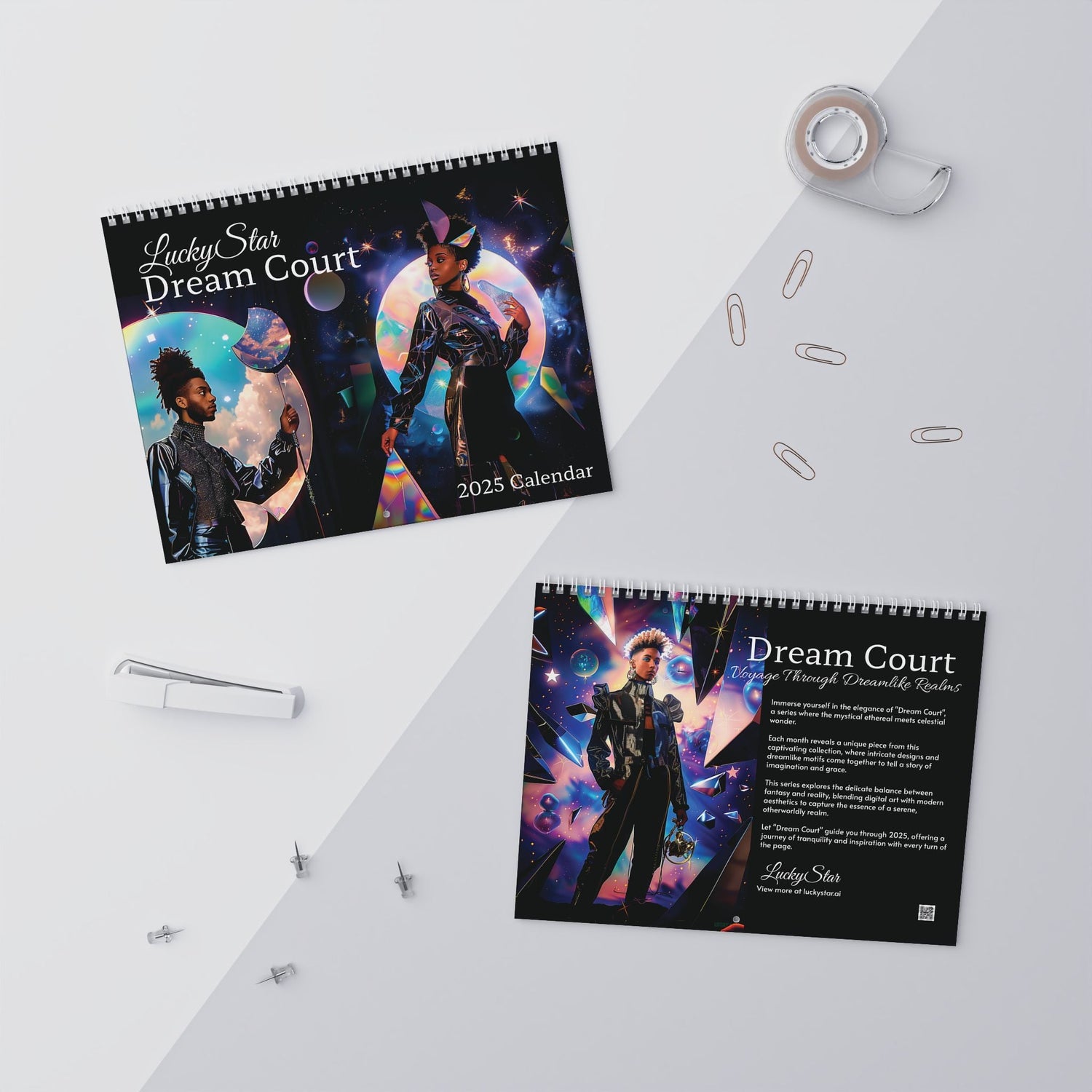
Part 11
Introduction to AI in Art
Understanding the basics of AI use in art.
presented by
Lucky Star & Digital Altar
Artificial Intelligence (AI) is transforming creative industries, with the art world
being no exception. By using algorithms to analyze data and recognize patterns, AI
generates unique visuals that expand the possibilities for artists and creators. While AI
offers exciting new opportunities, it also prompts important discussions about its
evolving role in this new era of creativity.

AI art is created using algorithms that
process vast amounts of data. These
algorithms enable machines to learn
from patterns and generate entirely new
visuals, often exploring styles and
themes beyond traditional artistic
methods. AI-generated art is not just a
tool for creation — it’s an innovative way
to push the boundaries of artistic
expression and discovery.
What is AI art?

AI analyzes patterns in data to produce
original artwork. With each new dataset,
AI tools can adapt and refine their
creations, blending different artistic
styles and experimenting with concepts
on an unprecedented scale. This
analytical power gives artists the ability
to generate fresh ideas, experiment with
new techniques, and discover previously
unseen creative possibilities.
How AI creates art.

Many artists today incorporate AI into
their creative processes. Whether it’s to
generate a starting point, to create
iterative drafts, or to add layers of
complexity to a project, AI enhances the
workflow. By taking care of repetitive
tasks and offering endless creative
prompts, AI allows artists to focus on
refining their vision and achieving their
creative goals.
AI art in practice.

Types of AI Tools for Artists
AI provides tools that artists can seamlessly integrate into their workflows, expanding
creative possibilities, automating time-consuming tasks, and elevating their projects. Below
are some of the AI art-related tools publicly available to artists today:
Generative Adversarial Networks
Generates new images by analyzing and learning from datasets, allowing artists
to create unique, original visuals that push creative boundaries.
Examples: RunwayML, StyleGAN.
Text-to-Image Models
Generates images from text descriptions. Artists provide prompts, and the model
produces visuals based on the input, offering endless possibilities for concept
development and experimentation.
Examples: DALL-E, Midjourney, Stable Diffusion.
Style Transfer
Lets artists apply visual elements from one piece to another, ensuring consistency
and creative exploration. Some tools also allow for easy style sharing and
collaboration, opening new paths for creative partnerships.
Examples: Playform, Prisma.
Neural Networks
Analyzes patterns in data, such as textures or colors, to generate visuals that align
with an artist’s desired aesthetic or thematic direction.
Examples: DeepDream, NVIDIA Canvas.
3D Generative Models
Creates three-dimensional objects and environments, offering artists and
designers the ability to generate photorealistic or abstract 3D assets for projects.
Examples: Luma Labs, Masterpiece Studio.

AI is not here to replace the artist, but to
collaborate with them. Despite the
sophisticated nature of AI, the artist
remains in control, directing the process
and making key creative decisions. AI
assists in producing output based on the
artist’s unique vision, ensuring that
creativity remains at the heart of the
artistic process.
The role of the artist.

As AI art continues to evolve, it also
presents ethical, legal, and systemic
challenges. Who owns AI-generated art?
What are the implications for copyright
and authorship? These are important
questions that artists and creators will
need to navigate as AI becomes a more
integral part of their work.
Ethics and AI.

AI in art is continuously growing and
evolving. As AI technology improves, the
complexities and creative possibilities will
expand, allowing for even more
sophisticated and diverse artistic
expression. The future of AI art will be
shaped by the ongoing partnership
between artists and machines, with AI
providing new ways to enhance and
explore creative visions.
The future of AI art.
AI provides tools that not only amplify creativity but also broaden the horizons for artists. As AI
technology advances, the possibilities for artistic expression will continue to grow, pushing the
boundaries of what’s creatively possible. It's up to us to ensure that this evolution serves and
empowers artists, preserving their role at the heart of the creative process.
A revolutionary tool for artistic expression.

x
Digital Altar


This piece was written by Lucky Star, with technical guidance and editing by Digital Altar.
If you enjoyed this knowledge share, feel free to explore my website and follow me on
social media for additional content.

Take our quick 4-question quiz and
see if you’re ready to dive into the
next part of our series: How AI &
Blockchain Intersect.
Ready to test your
knowledge?

